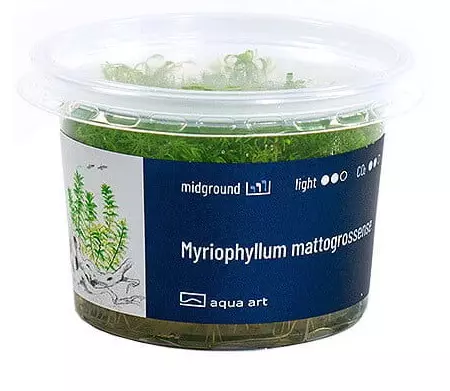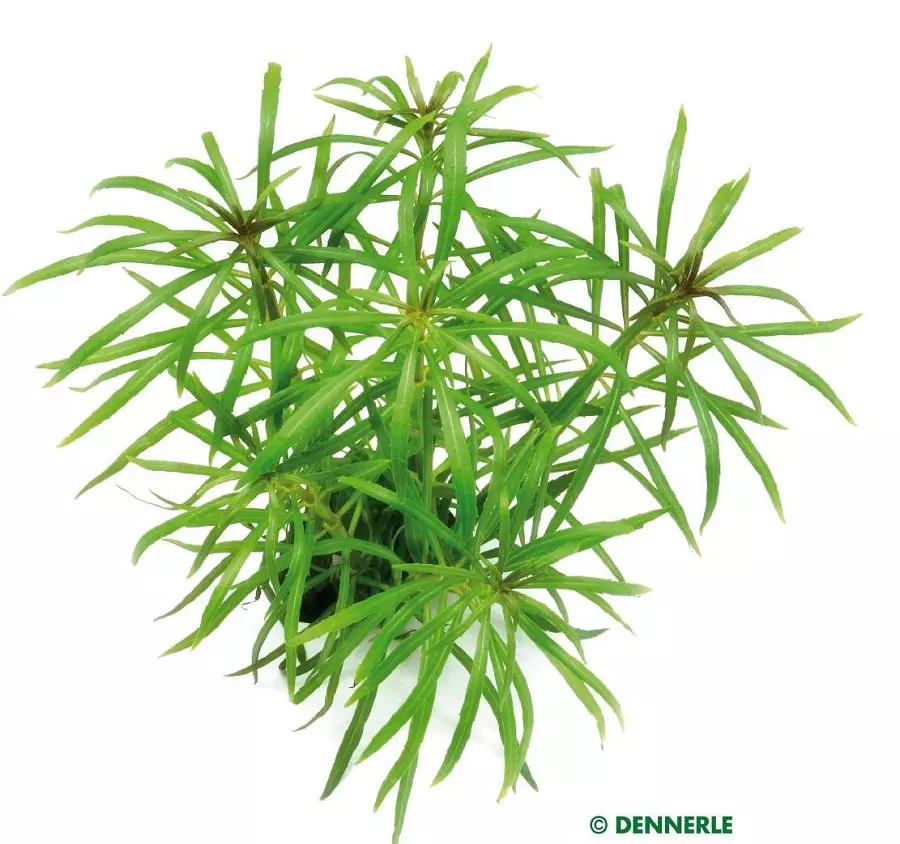Product information "Myriophyllum mattogrossense"
Myriophyllum Mattogrossense
Myriophyllum Mattogrossense, also known as red columbine, is a decorative aquarium plant that is quite demanding.
- Growing difficulty: demanding
- Light requirements: strong
- CO₂ requirements: strong
- Outgrown plant height: up to 60 cm
- Growth: fast
- Temperature: 24-28°C
- Placement in aquarium: third level
- Origin: South America
- Cup diameter 6 cm
Myriophyllum Mattogrossense or red coneflower is a rather demanding, although easy to grow tertiary plant. It is native to Brazil, more specifically to Mato Grosso in the Rio Amazon. It has long, brittle stems with pinnate, whorled leaves.
The plant itself is reminiscent of dill in appearance. Under good conditions, it can bloom with small, red, single flowers.
It needs a fertile, rich substrate and very intense lighting. Only then can it develop its full potential and show its beauty in the aquarium.
It does not like coarse gravel, it grows much better in a fine but permeable substrate.
Intensive CO₂ fertilization is advisable. Liquid fertilizer added to the water column will also improve the aesthetic qualities of the plant, which likes to make use of these resources. If it is well fertilized, it grows luxuriantly and the stems have a beautiful red color. It needs a long day, so the light should be on for at least 8-10 hours. It is very sensitive to the parameters that are not maintained. With regular water changes it grows vigorously and the leaves spread into green fans, while in old water the leaves become much smaller and unsightly. If you change the water every few months, you may lose the plant. Myriophyllum Mattogrossense thrives in both soft and hard water.pH 6-7.2.Temperature 24-28°C
It is also important that you prune the Myriophyllum regularly. If the plant is not pruned, it will get very fine leaves, especially in the lower part, which will look very unflattering. Regular pruning of the tops helps to prevent this.
The plant reproduces very easily, it is enough to plant the cut tip in fertile soil, and it will quickly form a rich, filamentous root system.
Due to the need for fertilizer and the capriciousness of the plant, it is not recommended for beginners in aquaristics.
The plant is grown in vitro and is free of snails, parasites and algae. A high quality gel was used as a nutrient solution for breeding, so it can quickly and easily adapt to new conditions.
.

















.jpg)















